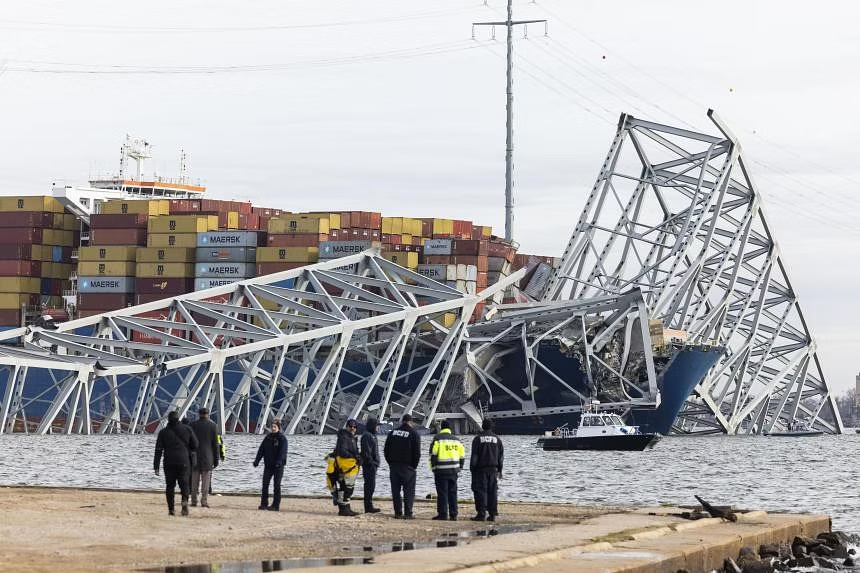
BALTIMORE, March 26, 2024 (BSS/AFP) - Baltimore's Francis Scott Key
Bridge, named after the poet who penned the lyrics to the US national anthem,
used to carry an average of around 31,000 vehicles a day across one of the
busiest harbors in the United States.
Its nighttime collapse, within seconds of being struck by a container ship,
is likely to cause substantial economic damage for as long as it continues to
block shipping in the Port of Baltimore.
The bridge's dramatic destruction shut the port for all maritime traffic,
which last year accounted for more than 52 million tons of foreign cargo, worth
some $80 billion, according to a recent statement from Maryland Governor Wes
Moore's office.
Baltimore is the deepest harbor in Maryland's Chesapeake Bay, and handles
the highest volume of autos and light trucks in the United States, as well as
the largest quantities of imported sugar and gypsum.
The Port of Baltimore is the ninth-busiest major US port in terms of both
foreign cargo handled and foreign cargo value, and is directly responsible for
more than 15,000 jobs, supporting almost 140,000 more.
It generates around $3.3 billion in total personal income each year,
according to the Maryland State Archives, and brings in almost $400 million in
annual tax revenues.
More than 50 ocean carriers use the port every year, making a total of
almost 1,800 trips annually.
Alongside its use as a major port for so-called roll on/roll off container
shipping, the Port of Baltimore also serves as a cruise terminal.
Last year, more than 440,000 individuals cruised out of the port -- the
most since 2012, according to the Governor's office.
The extended closure of the Francis Scott Key Bridge "will inevitably
disrupt commercial activities and supply chains," the Maryland Chamber of
Commerce said in a statement.
"Understanding the monumental task ahead to recover from this tragedy and
restore this vital transportation link, we urge all residents and businesses to
exercise patience and make the necessary long-term adjustments to their daily
routines, travel and operations," they added.
- 'Inadequate' protection -
Major bridges over shipping lanes like this one are supposed to be designed
in such a way to minimize damage in the event of a collision, according to
bridge designer Robert Benaim.
"Clearly the protection of the piers in this instance was inadequate," he
said.
"A pier or column of a bridge could never resist the impact of a large
ship. They must be protected from collision," he added.
"It's evident that the pier couldn't withstand the impact energy, leading
to its failure and subsequent collapse of the steel truss and reinforced
concrete deck superstructure," said University of Warwick structural
engineering professor Toby Mottram.
"The extent of the damage to the bridge superstructure appears
disproportionate to the cause, a matter for future investigation," he added.